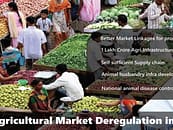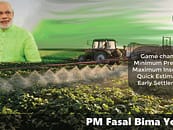Carbon Di-oxide and other greenhouse gases (GHG) are posing the biggest threat to the environment today. Surprisingly, the agriculture sector is one of the biggest emitters of CO2 and GHG and has captured the attention of environmentalists lately. Agriculture alone accounts for 25% of all human created GHG emissions. Regenerative farming methods are seen as a ray of hope to reverse the carbon emission cycle and plug the damage being caused by an indispensable activity for human survival i.e. farming.
Regenerative agriculture encompasses the farming and animal rearing practices aimed to reverse climate change by rebuilding soil organic matter and restoring degraded soil biodiversity – resulting in both carbon drawdown and improving the water cycle. The key is to do no harm and try to restore nature through technologies that regenerate and revitalize the soil and the environment. The result is healthy soil, capable of producing high quality, nutrient dense food while simultaneously improving, rather than degrading land, and ultimately leading to productive farms and healthy communities and economies.
Regenerative farming is a holistic practice that uses permaculture, organic farming practices, conservation tillage, cover crops, crop rotation, composting, mobile animal shelters and pasture cropping, to increase food production, farmers’ income and especially, topsoil. There has been immense damage caused to the top layer of soil owing to decarbonization, erosion, desertification, chemical pollution. With the current rate of degradation, there will be serious damage to public health due to a qualitatively degraded food supply due to diminished nutrition and loss of important trace minerals. It is scientifically impossible to feed the world, keep global warming below 2 degrees Celsius, or stop the loss of biodiversity without protecting and regenerating the soil.
The concept of regenerative farming is gaining traction for all the right reasons. It has also received focus from government bodies. The Government of Andhra Pradesh launched a plan in 2018 to convert 8 million hectares of land from conventional agriculture methodology to Zero-Budget Natural Farming by 2024—India’s first 100% natural farming state. This means there would be total elimination of synthetic chemicals in agriculture. This method has been regarded as a sustainable and chemically safer method of agriculture.
With rising consumer awareness about chemical free organic food products and growing concerns over climate change, regenerative farming is the one stop solution. It is also favourable mode of agriculture for farmers that saves input costs and gives better margin due to superior products and premium paid for organic food. It is time for concerned bodies to take up the task of popularizing regenerative farming at large scale though awareness programs and subsidy support.
FocusAgritech’s Outlook
Investors have identified the potential of regenerative agriculture across the globe. There are ventures like Farmland LP investing in transforming conventional farmland into a regenerative one. Other firms like Belgium based Soil Capital are supporting the cause with their advisory, management, and investment for farmers and organizations looking to develop regenerative agriculture. We believe it’s the right time to shift focus from traditional farming to regenerative farming owing to sustainability and profitability.
Companies to Watch: Aranya Agricultural Alternatives, Kiss the Ground, RegenAG, Regeneration International, Savory Network
Recent Articles
National Food Security Mission







